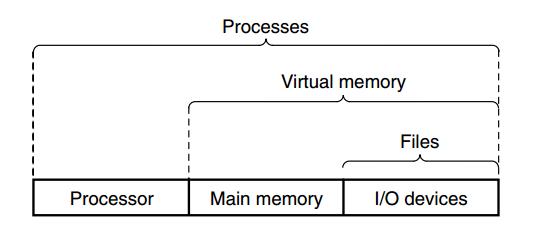[CSAPP] Chapter 1 Overview of Computer
Posted KennyRom
tags:
篇首语:本文由小常识网(cha138.com)小编为大家整理,主要介绍了[CSAPP] Chapter 1 Overview of Computer相关的知识,希望对你有一定的参考价值。
1.1 information is bits + context
All computer programs are just a sequence of bits, each with a value of 0 or 1, organized in 8-bit chunks called by bytes.
8 bits = 1 byte
All files is binary files.
1.2 Programs are translated by other programs into different forms

To compile a program, we have 4 phases.
Preprocessoring phases: The preprocessor modifies the original program acording to the character in the program.
The result is another program. Just like how preprocessor deal with \'#\' in C program.
Compiler phases: translate high-level language into assembler language
Assembler phases: translate the program into machine language
Linker phases: link to the standard libary
1.4 Processors read and Interpret Instructions stored in memory
The shell is a command-line interpreter. If the first word does not correspond to a built-in shell command, then shell will assume that it\'s a executable file.
1.4.1 Hardware organization of a System

Buses: running through the system, a collection of electrical conduits
carry bytes of information between devices
I/O Devices: system\'s connection to the external world
Each I/O device is connected to the I/O bus by either a controlled or an adapter.
Main memory: a temporary storage device
Processor: CPU or simple processor, control the hold system
1.5 Caches Matter
A system spend a lot of time moving information from one place to another.
A major goal is decrease the copy time.
The major part of copy time is copying between processor and memory.
Between these two devices, we have processor-memory gap.
To solve this problem, we will use cache.

1.6 storage devices form a hierarchy

1.7 OS manage the hardware
OS is a layer between the application program and the hardware.

purpose:
(1) protect hardware from misuse;
(2) make the hardware easy to use.

1.7.1 Processes
A process is the operating system\'s abstraction for a running program.
Multiple processes can run concurrently on the same system, and each process appears to have exclusive use of hardware.
Single CPU can appear to execute multiple processes concurrently by having the processor switch among them.
This mechanism is called context switching.

1.7.2 Threads
Threads running in the context of the process and sharing the same code and global data
Multi-threading can make program run faster.
1.7.3 virtual memory
Virtual memory is an abstraction that provides each process with the illusion that it has exclusive use of the main memory.
Each process -----> uniform view of memory -----> virtual address space

Program code and data:
Code begins at the same fixed address for all process followed by data locations.
Heap:
expand and contract dynamically at run time as a result of calls to standard C library routines such as malloc and free.
Shared libraries:
hold the codes and data for shared libraries such as C standard library and the math library
Stack:
compiler uses to implement functions call
expand and contract dynamically at run time
Kernel Virtual Memory:
the part of OS
1.7.4 files
A sequence of bytes
Every I/O devices is modeled as a file
1.8 Systems communicate with other systems using Networks
networks can be just viewed as an I/O device.
main memory ---> network adapter ----> network ----> another machine

1.9 Important Themes
1.9.1 Concurrency and Parallelism
Thread-level concurrency:
multiple programs execute at the same time
Hyperthreading = simultaneous multi-threading allows a single CPU to execute multiple flows of control.

Instruction-level Parallelism:
Processors execute multiple instructions at one time.
Single-instruction, Multiple-Data(SIMD) Parallelism:
special hardware allows a single instruction to cause multiple operations to be performed in parallel
1.9.2 The importance of abstractions in Computer System
formulate a simple application-program interface (API) for a set of functions that allows programmers to use the code without diving into its inner workings

1.10 summary
computer system = hardware + software
Information = groups of bits
Computer spends most of time copying data ----> the storage device is a hierarchy
3 fundamenta abstractions:
(1) Files are abstractions for I/O devices.
(2) Virtual memory is an abstraction for both main memory and disk.
(3) Processes are abstractions for the processor, main memory and I/O device.
以上是关于[CSAPP] Chapter 1 Overview of Computer的主要内容,如果未能解决你的问题,请参考以下文章